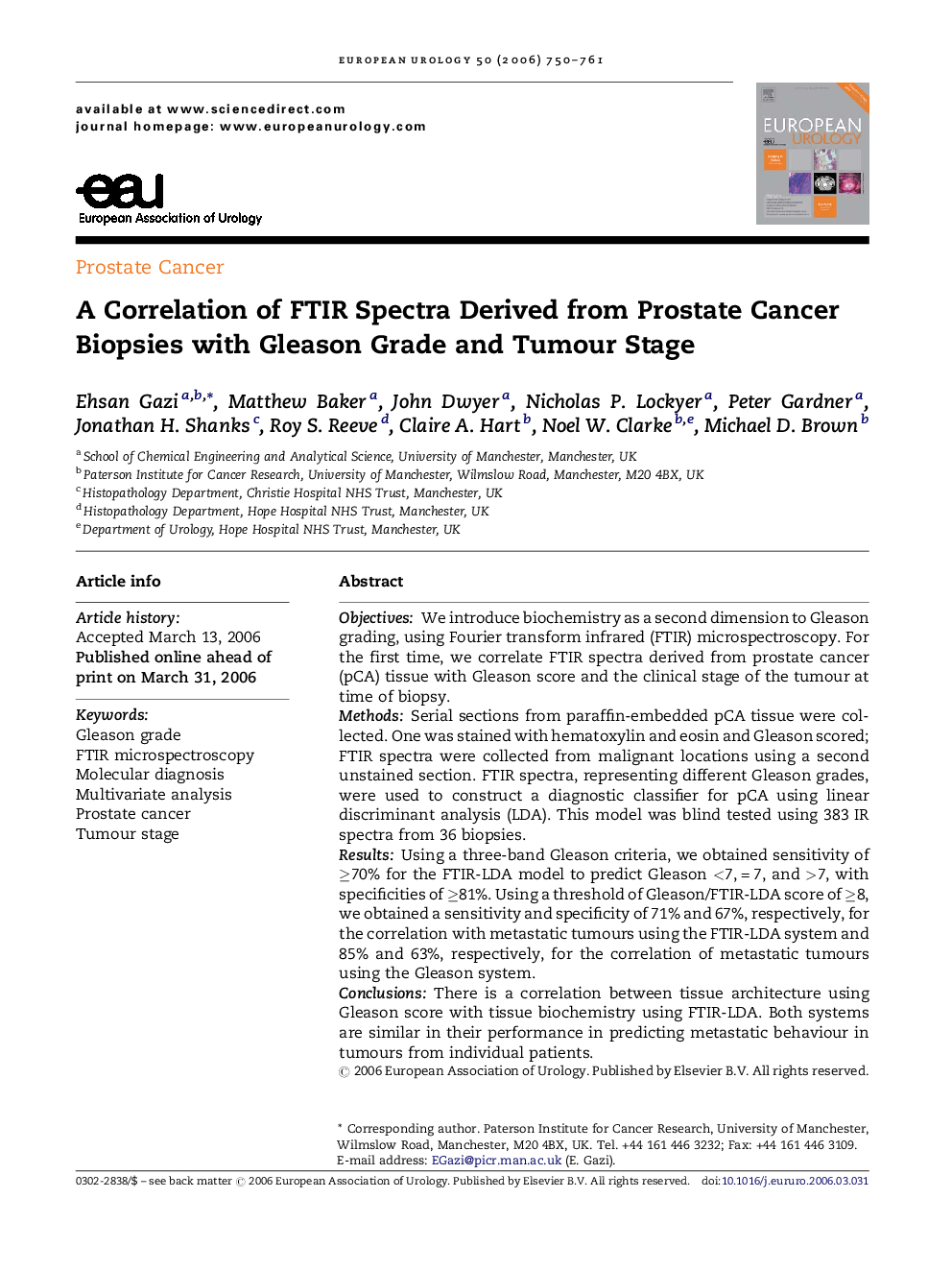| Article ID | Journal | Published Year | Pages | File Type |
|---|---|---|---|---|
| 3925852 | European Urology | 2006 | 12 Pages |
ObjectivesWe introduce biochemistry as a second dimension to Gleason grading, using Fourier transform infrared (FTIR) microspectroscopy. For the first time, we correlate FTIR spectra derived from prostate cancer (pCA) tissue with Gleason score and the clinical stage of the tumour at time of biopsy.MethodsSerial sections from paraffin-embedded pCA tissue were collected. One was stained with hematoxylin and eosin and Gleason scored; FTIR spectra were collected from malignant locations using a second unstained section. FTIR spectra, representing different Gleason grades, were used to construct a diagnostic classifier for pCA using linear discriminant analysis (LDA). This model was blind tested using 383 IR spectra from 36 biopsies.ResultsUsing a three-band Gleason criteria, we obtained sensitivity of ≥70% for the FTIR-LDA model to predict Gleason <7, = 7, and >7, with specificities of ≥81%. Using a threshold of Gleason/FTIR-LDA score of ≥8, we obtained a sensitivity and specificity of 71% and 67%, respectively, for the correlation with metastatic tumours using the FTIR-LDA system and 85% and 63%, respectively, for the correlation of metastatic tumours using the Gleason system.ConclusionsThere is a correlation between tissue architecture using Gleason score with tissue biochemistry using FTIR-LDA. Both systems are similar in their performance in predicting metastatic behaviour in tumours from individual patients.
